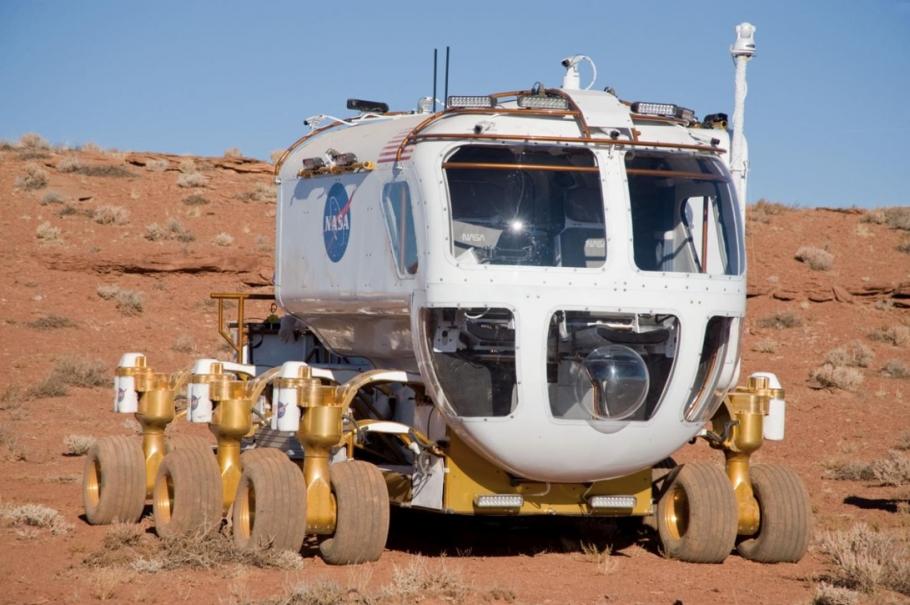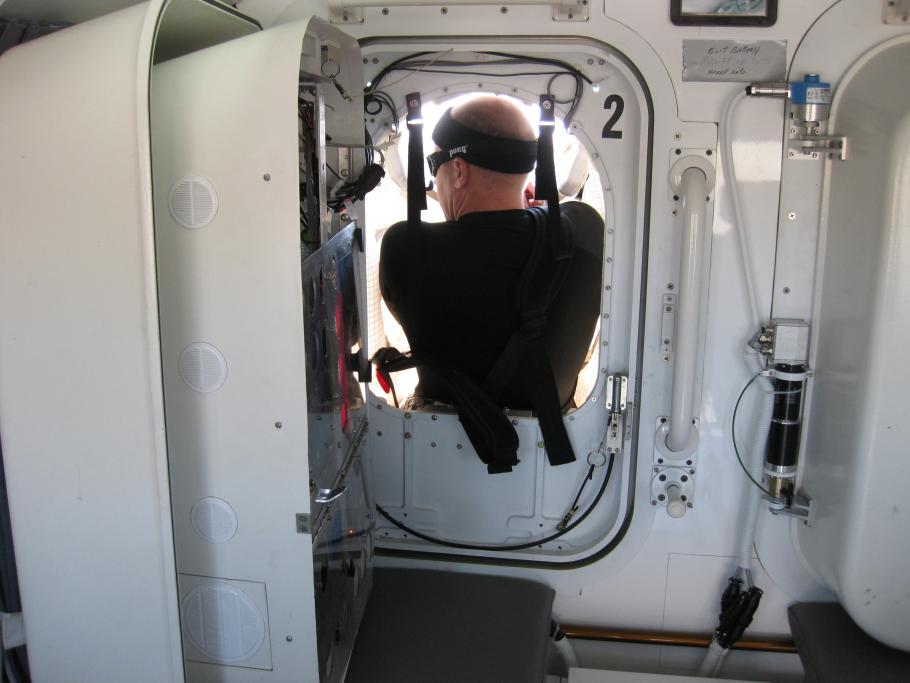It’s a quarter of a million miles to the Moon, we’ve got fully charged batteries, half a pack of space food, it’s daytime, and we’re wearing spacesuits. Hit it.
Last week I returned home from the adventure of a lifetime, a simulation of a mission on the Moon where I lived and worked inside NASA’s Lunar Electric Rover (LER) for 14 days during NASA’s Desert RATS (Research and Technology Studies) analog field test. For the last 12 years, Desert RATS has been testing new concepts for spacesuits, robots, vehicles and tools in rugged environments that are similar to the surfaces of the Moon and Mars. This year, Desert RATS tested how a crew of two would live and work inside a small pressurized rover (the LER), dock with various equipment and robots, and use of the rear-entry suitport for donning and doffing spacesuits. These concepts are being tested in an effort to provide Astronauts new ways to explore the lunar surface efficiently and effectively for long duration missions. The LER provides the crew the necessary shelter and safety to live away from their original landing site, while the suitport saves valuable time and resources by allowing Astronauts to slide in through the backpack of the spacesuits, which are attached to the outside of the rover, and be on the surface in less than 15 minutes.
For our mission, Astronaut Mike Gernhardt and I explored Black Point Lava Flow, north of Flagstaff, Arizona. These 14 days were packed with activities that would be completed by a crew during a real mission. Days 1 and 2 were spent checking out the vehicle and supplies, rendezvousing with ATHLETE, and docking with the Portable Utility Palette (PUP). Days 3 through 10 were spent studying the local geology, where we followed a series of traverses planned by the Science Team. Using only a black and white satellite image of the area for planning, specific locations were selected for us to visit and collect samples based on a series of science questions and prioritized objectives. Since I was the crew geologist, this was obviously my favorite part of the mission. My favorite view was at the far end of the lava flow looking over a river valley towards the rock formations to the east. On days 11 through 14, we docked with a portable habitat being carried by ATHLETE, moved regolith around with the LANCE, and rescued another two person crew from a broken down LER. Four of us spent 24 hours inside one LER simulating a rescue mission on the Moon. Surprisingly, there was still a lot of room inside with four people. We each took turns driving and sleeping through the night. By the time the mission was completed, Mike and I had driven over 120 kilometers (75 miles) and spent over 300 hours inside the LER.
Daily life inside the LER was very fun and it was convenient to have everything you needed literally within arms reach. Each morning we tagged up with Houston to go over our daily plan and had our breakfast. Our meals consisted of real space food and dehydrated camping food. There was a “sink” with hot and cold water to make our meals with, which were actually really tasty. The bathroom was a glorified camping toilet, nothing fancy, just some special plastic bags. Our personal gear and food was stowed in lockers within the side hatches and beneath the floor boards and bunks. We exercised for at least one hour each day using a stationary bicycle machine and resistance bands. Special clothing with silver lined threads to kill odors allowed us to reuse the same set of shirts and shorts for the entire mission. At night, we unfolded curtains attached to the walls and ceiling to create individual sleep stations which were both dark and sound proof. After a good night sleep, we woke up and did it all over again.
This mission would not have been possible without an absolutely amazing ground support team who followed us every step of the way and served as the mission control back in “Houston”. This experience truly shows that human exploration of the Moon takes more than just the crew, but relies heavily on a dedicated and hard working team back on the ground to make it all possible.
- More photos from the Desert RATS 2009 Field Test
- Join Desert RATS on Facebook
- Video of the LER in 3-D (requires 3-D glasses). Posted on YouTube by NASA 360


